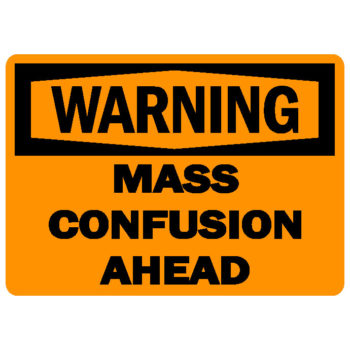IAB Seeks To Clear Understanding On Programmatic
by on 28th Jul 2014 in News

Separate moves to harmonise understanding in the ad tech space are taking place, with the IAB this week launching a pan-European Programmatic Trading White Paper along with a host of ad tech vendors to help agree definitions for the different elements of the technology’s use.
The IAB Europe is launching what it claims is the first pan-European Programmatic trading White Paper, as well as establishing a pan-European Programmatic Trading Task Force, with the aim of explaining how the technology works, and helping to agree more widely-held definitions and consensus on the different aspects of programmatic advertising, as well as bolster education levels around the technology.
Bid for 'neutral' definitions
The trade body has also announced it was working with its AdEx Benchmark Task Force and research firm IHS Technology to size the European Programmatic Trading market – the findings are set to be published in Q3, 2014.
This initiative is backed by ADTECH, AppNexus, AudienceScience, Cxense, The Exchange Lab, Improve Digital, Yahoo, Xaxis and White & Case, with the trade body purposely involving several ad tech vendors to agree “company-neutral simple explanations about what programmatic trading is”, as well as dispel widespread misnomers about the technology.
“Programmatic Trading remains a confusing mix of three letter acronyms, a swarm of potential solutions and a lurking fear that it’s going to put buyers and sellers out of a job,” reads the white paper.
Defining the central tenets, without the jargon
The document continues to explain the difference between programmatic media trading and real-time bidding (RTB), and advises readers on the separate tiers of the industry, plus the intricacies of how a media buy is performed using the technology, such as how a data management platform (DMP) is involved.
“Programmatic has emerged as a classically disruptive technology. In the early days of RTB, it was ‘good enough’ for buyers and sellers to use on low value inventory to achieve a new kind of audience buying that could be very specific and adjusted in real time. As the technology has matured, so it has moved up the value chain,” reads the document.
Andrew Moore, SpotXchange, managing director, EMEA, says more guidance and clarification over how to use such technology is needed to help advertisers interested in how ad tech can be used to enhance their media plans (but may be intimidated by the often elaborate terms used by ad tech vendors).
"One of the things is is that we're in a jargon-fuelled industry that is VC-rich, so what you find is that everyone is trying to prove a point of difference. Another thing is that companies [in ad tech] pivot a lot to get a higher valuation, as many people believe that the more spaces you occupy on the lumascape, the better the valuation."
Skills gaps in even the leading markets
The IAB’s white paper also identifies the leading European programmatic markets with Holland (a market that has historically been propelled by the high proportion of ad tech vendors there), the UK (which was quick to adopt ad tech due to the eagerness of buyers to use the tech identified as leading proponents of the technology).
The announcement of the coordinated movements comes a month after the IAB’s UK chapter published a study claiming that one-in-three pounds spent on display advertising were bought using programmatic technologies in the UK last year, with 28% of the £1.86bn spent on UK display advertising in 2013 traded programmatically.
However, a report recently commissioned by Quantcast identified a perceived lack of skills in the market by both agency sales staff, as well as in-house marketers, with both tiers of the industry noting difficulty in sourcing adequately skilled staff to keep up to date with the pace of change in the sector.
Speaking with The Drum, Rebecca Muir, Quantcast, product marketing lead, said the findings, based on interviews with over 200 in-house and media agency staff, demonstrated that agencies were currently leading the transition to programmatic, but there was also a near universal skills gap in how to harness such technology.
“It’s natural that agencies are taking a lead in RTA, as they have been running display campaigns before programmatic advertising even came around. But one thing we are starting to see is that brands are increasingly starting to take an interest,” she added.
Ad tech vendors are often keen to provide both in-house and agency staff with training on how to use their own products, but the problem is that much of these programmes are often bespoke to their own technology and, as noted by SpotXchange's Moore, this often driven by the companies own desire to drive their own valuation, not necessarily spreading understanding in the wider market.
What this means for media buying agencies
Last week this publication posted an analysis on how agencies are responding to the emergence of ‘big data’, and the subsequent threat of disintermediation, where Michel de Rijk, Xaxis, managing director, APAC, said that he believed that while some clients may want to bring media-buying in-house, but more often this proves too difficult.
“There will be a handful that will bring it in-house, but then there’s those that are behind them that think they can do it in-house,” he added.
Automated GuaranteedProgrammaticVideo








Follow ExchangeWire